
South Australian Medical Heritage Society Inc
Website for the Virtual Museum
Home
Coming meetings
Past meetings
About the Society
Main Galleries
Medicine
Surgery
Anaesthesia
X-rays
Hospitals,other
organisations
Individuals
of note
Small Galleries
Ethnic medicine
- Aboriginal
- Chinese
- Mediterran
Private Collection
These medical heritage items have been donated to an Adelaide organisation and collected for possible future exhibits. They form a unique collection of items, some not represented in other medical museums.
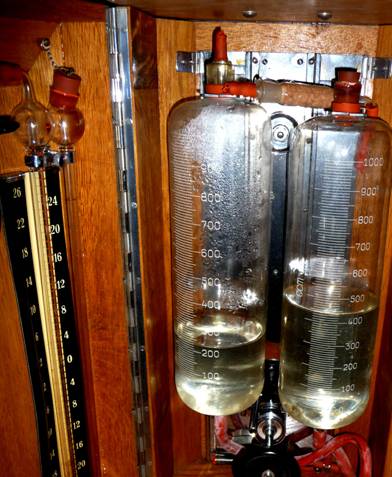 An artificial pneumothorax machine used in the past to treat
tuberculosis. An intrathoracic pressure gauge is on the left. The water
levels are used to regulate the volume of air to be instilled into the
pleural cavity. The regulator tap (bilingual) is on the right.
An artificial pneumothorax machine used in the past to treat
tuberculosis. An intrathoracic pressure gauge is on the left. The water
levels are used to regulate the volume of air to be instilled into the
pleural cavity. The regulator tap (bilingual) is on the right.
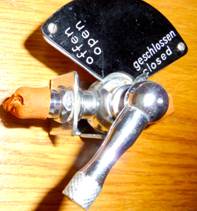

Before the advent of ampoules, intramuscular and intravenous drugs were
presented in tablet form. They were first dissolved in saline and then
injected. The photo shows the drug, number of doses and manufacturer.
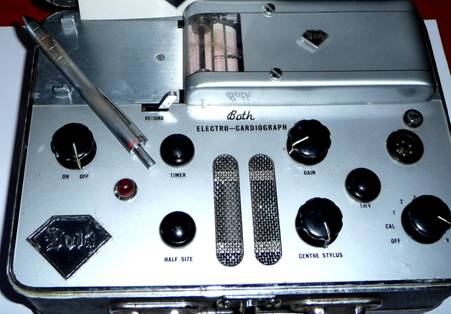 Both brothers, with Professor Kerr-Grant’s help, developed the first
South Australian ECG Machine in 1936. The machine above is a later
model. The record is by ink pens rather than “thermal”.
Both brothers, with Professor Kerr-Grant’s help, developed the first
South Australian ECG Machine in 1936. The machine above is a later
model. The record is by ink pens rather than “thermal”.
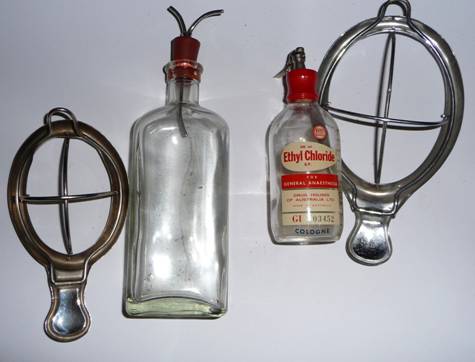 After chloroform, ether and ethyl chloride became popular anaesthetic
agents. The second from left is an ether dripper and a ethyl chloride
spray is next to it. The wire masks at the periphery are covered with
muslin, applied over the nose and mouth and soaked with the
anaesthetic.
After chloroform, ether and ethyl chloride became popular anaesthetic
agents. The second from left is an ether dripper and a ethyl chloride
spray is next to it. The wire masks at the periphery are covered with
muslin, applied over the nose and mouth and soaked with the
anaesthetic.
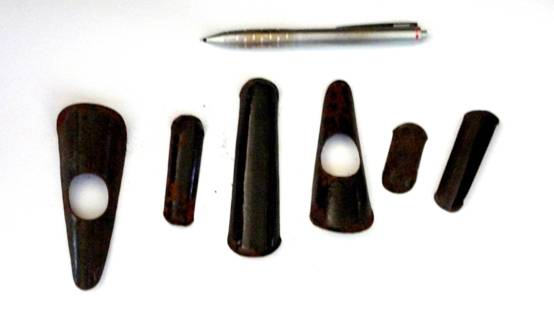 Likely finger splints donated by Sir Henry Simpson Newland. The oval
gaps were fashioned to accommodate the knuckles.
Likely finger splints donated by Sir Henry Simpson Newland. The oval
gaps were fashioned to accommodate the knuckles.
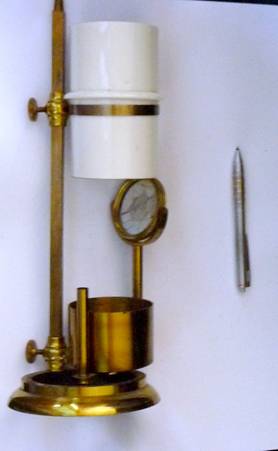 An “unknown” apparatus: the mirror in the middle could have been
used to direct a beam of light at a microscope or an ent concave
mirror. It is likely that a light globe was placed above the top of the
cylinder.
An “unknown” apparatus: the mirror in the middle could have been
used to direct a beam of light at a microscope or an ent concave
mirror. It is likely that a light globe was placed above the top of the
cylinder.
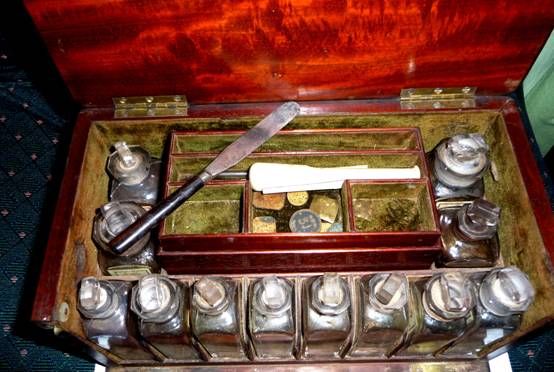
A dispensing (family or medical) drug box. Various powders and lotions
are stored in glass containers. A spatula and a pestle are in the
centre. Weights for the scales are under the pestle (white).
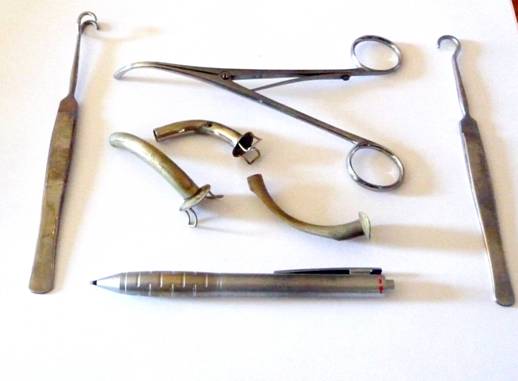
A set of trachaeostomy tubes, dilators and retractors, most likely used
during the diphteria epidemic in the early 20th century.
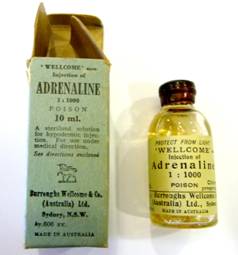 Adrenalin is an adrenergic and vasoprestor stimulant. It is used in emergency treatment of anaphylactic reactions such as insect stings and in asthma attacks.
Adrenalin is an adrenergic and vasoprestor stimulant. It is used in emergency treatment of anaphylactic reactions such as insect stings and in asthma attacks.
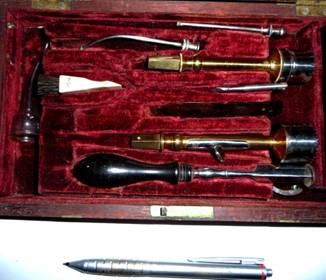 A neuro surgical kit, used to make burr holes to relieve intracranial
pressure due to haemorrhage into the confines of the skull.
A neuro surgical kit, used to make burr holes to relieve intracranial
pressure due to haemorrhage into the confines of the skull.
Emeritus Professor Donald Simpson has kindly commented about the likely origin of these instruments:
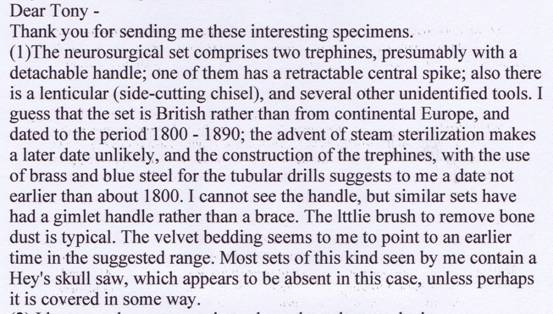
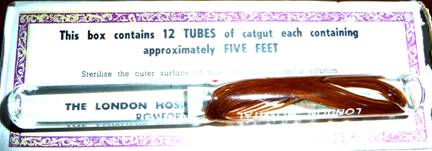
Suture material in the past was stored in glass tubes. A
tube containing 'chromic cat gut' is above.
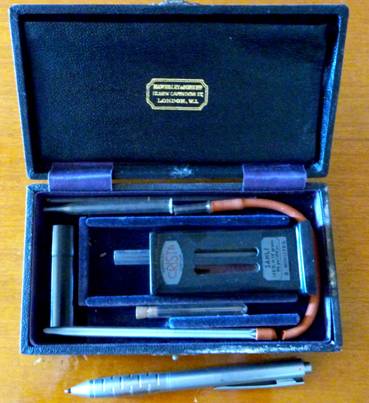 Before the arrival of automated coulter counters to print out the
various blood parameters, surgeons and physicians used their own kits.
Left is a haemoglobinometer. It measures the blood haemoglobin.
Before the arrival of automated coulter counters to print out the
various blood parameters, surgeons and physicians used their own kits.
Left is a haemoglobinometer. It measures the blood haemoglobin.
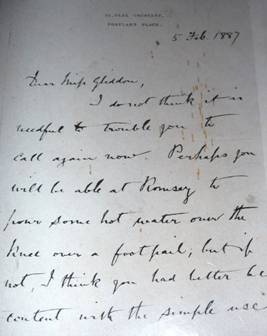
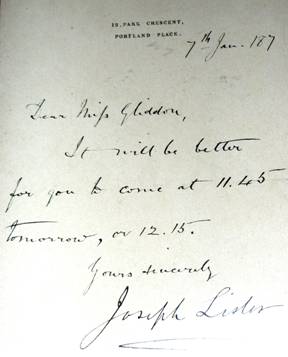
Two samples of Lord Lister's correspondence to one of his patient’s.
Clinical details are omitted to preserve confidentiality.
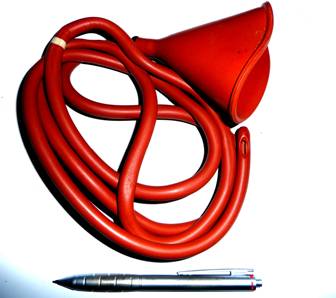 A rubber funnel and tube used for gastric lavage.
A rubber funnel and tube used for gastric lavage.
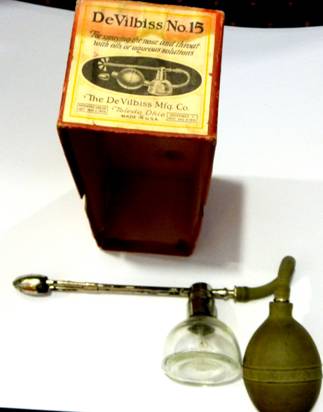 A De Vilbiss insufflator, usually used to anaesthetise the oro-pharynx
before laryngoscopy.
A De Vilbiss insufflator, usually used to anaesthetise the oro-pharynx
before laryngoscopy.
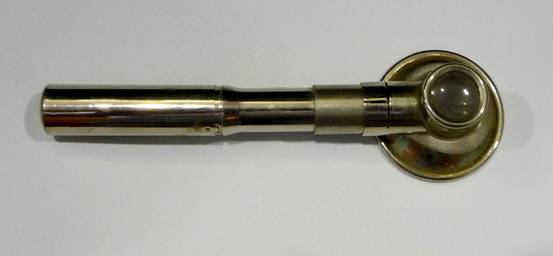 A simple torch using batteries coupled with a magnifying glass, usually
used to view skin lesions.
A simple torch using batteries coupled with a magnifying glass, usually
used to view skin lesions.
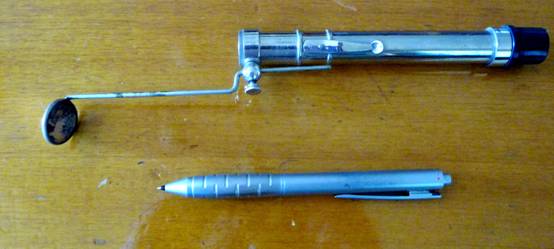 A similar device used to visualise the vocal cords or nasopharynx.
A similar device used to visualise the vocal cords or nasopharynx.
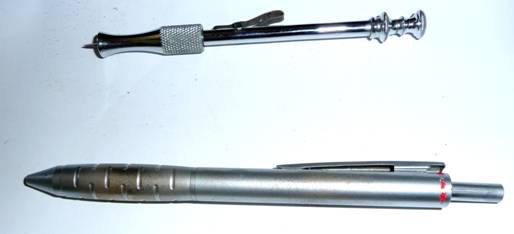 A mechanical lance used to perforate the skin to obtain a blood
sample.
A mechanical lance used to perforate the skin to obtain a blood
sample.
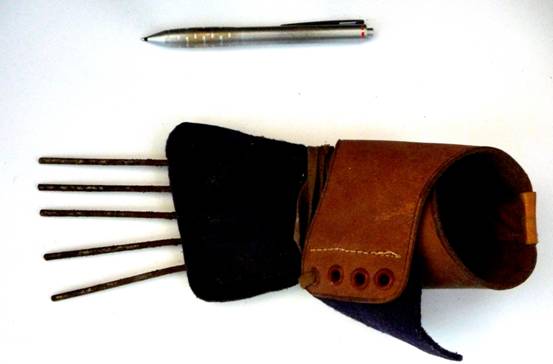 Foot splint, precise function unknown, possibly used to immobilise the
toes after surgery.
Foot splint, precise function unknown, possibly used to immobilise the
toes after surgery.
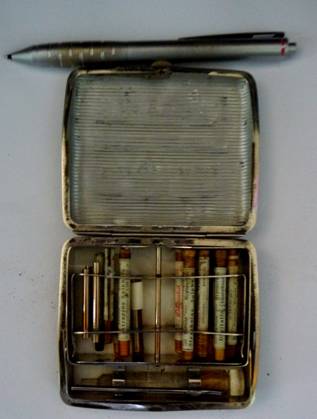 A portable container with a syringe and first aid drugs.
A portable container with a syringe and first aid drugs.
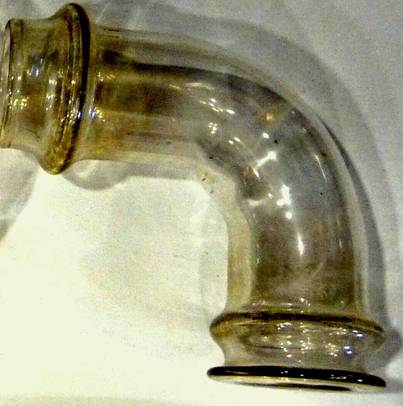 Paul’s tube used to decompress bowel after surgery. Named after a British surgeon F. T. Paul (1851-1912). Unfortunately shadows distort the picture.
Paul’s tube used to decompress bowel after surgery. Named after a British surgeon F. T. Paul (1851-1912). Unfortunately shadows distort the picture.
-o0o-